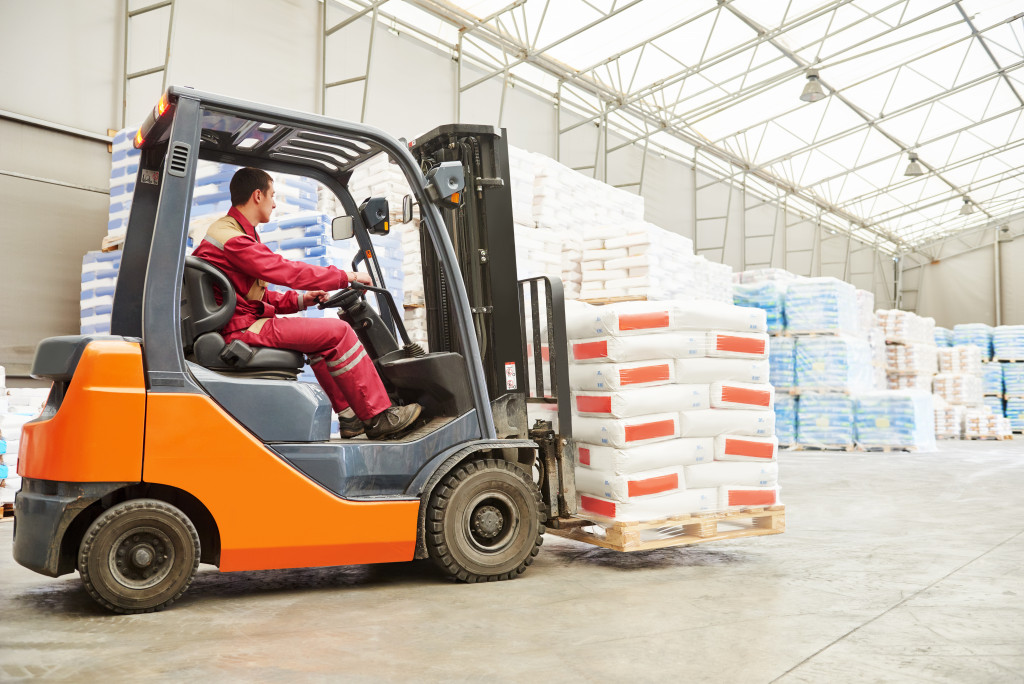• Analyze current material handling practices and identify areas of improvement.
• Invest in protective items such as forklift covers, safety harnesses, and pallet jacks for your equipment.
• Install cables, hoses, and sheaths with protective covers to extend the life of these materials.
• Provide staff with thorough instruction and training on the use of materials and equipment.
• Regularly scheduled refresher courses should also be provided to ensure that staff is up-to-date on any changes.
Running a construction site efficiently is essential for achieving success. One of the most important aspects of a successful construction site is material handling, which involves the movement, storage, and disposal of materials used in the construction process. Improving this can help your business run more efficiently and save money in the long run. Here’s a look at how to optimize material handling on your construction site.
Analyze Your Current Practices
Before you can improve your material handling processes, you need to know what they are currently like. Take some time to analyze the current practices that are in place and identify areas where there is room for improvement.
A thorough analysis will help you create an effective plan for improving your material handling processes. For instance, you may find that the current process is inefficient or too costly, or you may notice an opportunity to reduce waste.
Moreover, you can use this analysis to identify potential hazards and risks associated with the material handling process, such as slips, trips, and falls. By addressing these issues early on, you can reduce the risk of an accident occurring on your construction site.

Choose the Right Protective Items
Once you have identified areas of improvement, it’s time to choose the right items for protecting your equipment. There are many different types available for use on a construction site, so make sure that you select the one that best suits your needs and budget. Here are some examples to take note of:
Forklift Covers
A set of high-quality forklift fork covers can protect your equipment from damage and debris while in use. This will help extend the life of your forklift and reduce the need for costly repairs. Specifically, look for covers that are constructed from high-quality materials and designed to fit the model of your forklift.
Safety Harnesses
In addition to forklift covers, safety harnesses are a must-have for any construction site. These devices help ensure that your staff is safe while operating heavy machinery and can reduce the risk of injury or death in the event of an accident. When selecting harnesses, look for those that are designed specifically for the type of equipment you are using and ones that meet safety standards.
Pallet Jacks
Pallet jacks are essential for moving large loads around a construction site. As such, it’s important to invest in good-quality pallet jacks with high load capacities. This will ensure that your equipment is durable and can handle the heavy loads needed for construction work.
Cables, Hoses, & Sheaths
Cables, hoses, and sheaths are all important components of material handling on a construction site. Invest in the best quality available, as this will help reduce the risk of accidents and improve productivity. Additionally, you may want to consider protective covers for your cables, hoses, and sheaths to extend their life and protect them from damage or debris.

Train Your Staff Properly
Having the right equipment isn’t enough. Your staff must also be properly trained in order to use it effectively and safely.
Training should include both theoretical instruction (such as safety protocols) as well as practical hands-on training (using the actual equipment). Regularly scheduled refresher courses should also be provided to ensure that staff is up-to-date on any changes or updates in industry regulations or standards.
If possible, consider investing in a digital training platform to make sure that your staff is always up-to-date on the latest safety protocols and guidelines. This way, you can ensure that all of your employees are aware of the risks associated with material handling and know how to properly use the equipment.
Improving material handling practices on a construction site can have many benefits, including increased efficiency and reduced costs. It is important to start by analyzing current practices, choosing the right equipment, and training staff properly before implementing any changes or improvements. With this approach, businesses can ensure that their operations run smoothly while still remaining safe and compliant with all relevant regulations and standards. By taking these steps today, you can ensure that material handling processes will be optimized tomorrow.



